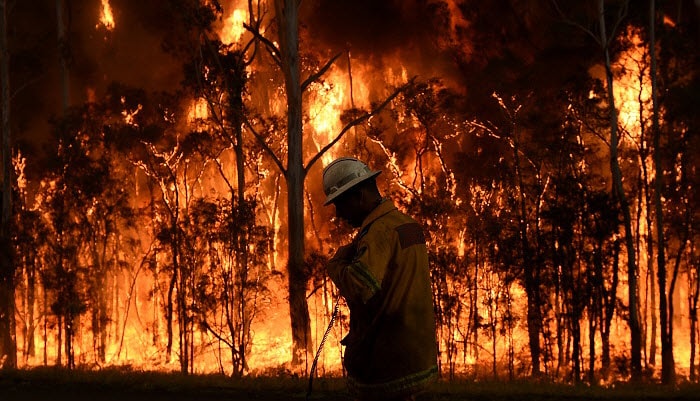Mastering Bushfire Preparedness: The Role of a BAL Assessment in Risk Mitigation
Crucial Tips for Bushfire Monitoring to Guarantee Fire Protection

Understanding Bushfire Threat Degrees
Recognizing the differing levels of bushfire risk is essential for effective preparation and preparation in mitigating possible risks to buildings and lives. Bushfire danger levels are commonly categorized based upon aspects such as climate condition, fuel availability, topography, and historic fire habits. By understanding these danger levels, people and communities can proactively execute methods to minimize vulnerability and improve durability despite possible bushfire occasions.
The first degree of bushfire risk is reduced danger, where the probability of a bushfire taking place and triggering considerable harm is minimal. Risky degrees symbolize a substantial danger, with problems helpful to quick fire spread and severe fire actions.
Comprehending these bushfire threat degrees makes it possible for stakeholders to tailor their preparedness and feedback activities appropriately, making sure a positive and effective method to bushfire monitoring.
Creating a Defensible Room
Effective bushfire administration begins with establishing a defensible area around homes to enhance security versus potential fire hazards. A defensible room is a buffer area that creates an obstacle between a framework and the surrounding flammable plant life. This area acts as a crucial line of protection, giving firemans a risk-free area to operate and assisting to lower the risk of a fire spreading out to the building.
When establishing a defensible room, it is necessary to consider the design of the residential or commercial property and the bordering landscape. Clearing up plant life, especially extremely combustible plants, within a particular radius of the property can help protect against the fast spread of fires. Furthermore, keeping a well-irrigated area around the residential or commercial property can additionally improve its defensibility.
Regular upkeep of the defensible room is critical to guarantee its efficiency. This consists of trimming overhanging branches, removing dead plant life, and keeping the area complimentary of debris. By investing time and effort into establishing and preserving a defensible area, homeowner can considerably enhance their possibilities of shielding their homes and assets during a bushfire.
Carrying Out Fireproof Landscape Design
When developing landscapes to mitigate the threat of bushfires, including fire-resistant components is necessary for enhancing home protection and minimizing fire threats. Applying fireproof landscape design includes tactical preparation to develop a defensible room around frameworks. Begin by choosing fire-resistant plant varieties that are much less likely to ignite and generate reduced degrees of flammable materials. Select plants with high moisture web content, reduced oil material, and marginal dead vegetation to reduce the risk of fire spread. In addition, preserve sufficient spacing in between plants and maintain them correctly pruned to prevent fire from easily leaping in between vegetation. continue reading this

Developing an Emergency Discharge Plan
Establishing an extensive emergency situation evacuation plan is critical for ensuring the security and health of individuals throughout possible bushfire cases (BAL Assessment). An effective evacuation plan need to lay out clear treatments to follow in case of a bushfire threat, including assigned discharge routes, assembly points, and interaction methods
To start creating an emergency discharge plan, it is vital to evaluate the details risks and susceptabilities of your location. Recognize multiple discharge routes that cause safe areas away from the fire, thinking about variables such as terrain, roadway access, and prospective threats. Develop interaction channels to sharp residents of an approaching evacuation, using methods such as alarms, message notifies, or door-to-door alerts.
Regularly evaluation and practice the discharge strategy with all homeowners or area participants to guarantee everyone understands their responsibilities and roles. Conduct drills to examine the effectiveness of the plan and make any essential modifications. By having a well-prepared emptying plan in position, my website you can enhance the possibilities of a organized and risk-free discharge during a bushfire emergency.
Keeping Fire Safety And Security Tools
After developing a detailed emergency situation discharge prepare for bushfire events, it is crucial to prioritize the normal upkeep of fire safety and security devices to make certain optimal capability and readiness. Regular upkeep of fire safety and security equipment such as fire extinguishers, smoke detectors, smoke alarm, and automatic sprinkler is important in protecting lives and residential property throughout a bushfire. Carrying out routine evaluations, testing, and servicing of these gadgets by qualified experts is necessary to assure they are in functioning order when required.
Fire extinguishers must be checked routinely for pressure levels, noticeable damage, and appropriate functionality. By carefully keeping fire safety and security tools, people can enhance their readiness and feedback capacities in the occasion of a bushfire.
Verdict
Finally, effective bushfire monitoring involves understanding threat levels, developing defensible rooms, implementing fire-resistant landscaping, establishing discharge plans, and maintaining fire security devices. By adhering to these crucial tips, people can ensure much better fire defense and safety and security for their areas and buildings. It is essential to focus on proactive measures to alleviate the risks connected with bushfires and why not check here to be gotten ready for emergency situations.
By understanding the nuances of bushfire threat levels, developing defensible rooms, carrying out fire-resistant landscaping, creating extensive discharge plans, and guaranteeing the upkeep of fire security tools, areas and individuals can substantially reinforce their durability versus the devastations of wildfires - BAL Report. These suggestions are not just important for guarding against prompt fire risks but additionally for fostering long-lasting fire security strategies that can make a substantial distinction in the face of intensifying bushfire hazards
High-risk degrees signify a significant threat, with conditions favorable to fast fire spread and severe fire behavior. Regular maintenance of fire safety and security devices such as fire extinguishers, smoke detectors, fire alarm systems, and sprinkler systems is critical in safeguarding lives and residential or commercial property during a bushfire.In final thought, effective bushfire administration includes comprehending danger levels, developing defensible areas, carrying out fireproof landscape design, creating emptying strategies, and preserving fire safety and security tools.